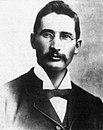South African general election, 1938
|
|
|||||||||||||||||||||||||||||||||||||||||
|---|---|---|---|---|---|---|---|---|---|---|---|---|---|---|---|---|---|---|---|---|---|---|---|---|---|---|---|---|---|---|---|---|---|---|---|---|---|---|---|---|---|
|
|||||||||||||||||||||||||||||||||||||||||
|
All 150 general roll seats in the House of Assembly |
|||||||||||||||||||||||||||||||||||||||||
|
|||||||||||||||||||||||||||||||||||||||||

House of Assembly after the election
|
|||||||||||||||||||||||||||||||||||||||||
|
|||||||||||||||||||||||||||||||||||||||||
The 1938 South African general election was held, on 18 May 1938, for the 150 seats in the House of Assembly of the Union of South Africa. The United Party won an absolute majority.
The National Party (led by the Prime Minister J. B. M. Hertzog) and the South African Party (whose leader was the Deputy Prime Minister Jan Smuts) were in coalition at the time of the South African general election, 1933.
After the election the two coalition parties fused, to become the United South African National Party (commonly known as the United Party). The formal launch of the new party took place on 5 December 1934.
Those members of the National Party, who did not accept the fusion, constituted themselves as the Purified National Party (PNP) in June 1934. The leader of the new party was Dr D.F. Malan, who had been the National Party leader in Cape Province. Eighteen MPs joined the PNP caucus. Dr Malan became the Leader of the Opposition, in the House of Assembly.
The members of the South African Party, who rejected the fusion, formed the Dominion Party. Its leader was Colonel C.F. Stallard.
Under the Representation of Natives Act 1936, all registered black voters in the Cape Province were removed from the common voters’ lists and placed on a special Cape Natives voters’ roll. This served to effectively dismantle the traditional multi-racial "Cape Qualified Franchise" system.
Black voters had never been entitled to vote in Transvaal and the Orange Free State. Few had ever qualified in Natal.
The voters’ rolls, for 1935, were broken down by race in each province (using the racial classifications in use in South Africa at the time).
...
Wikipedia



